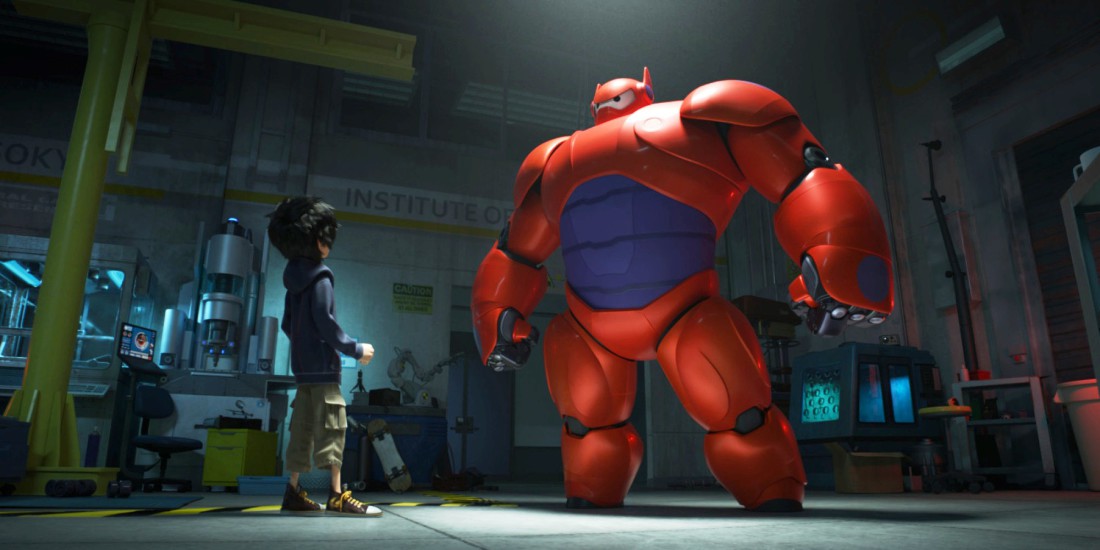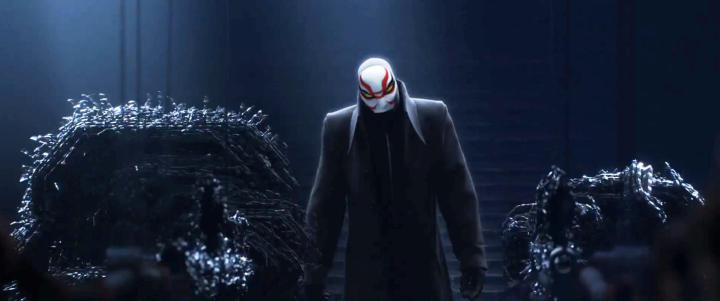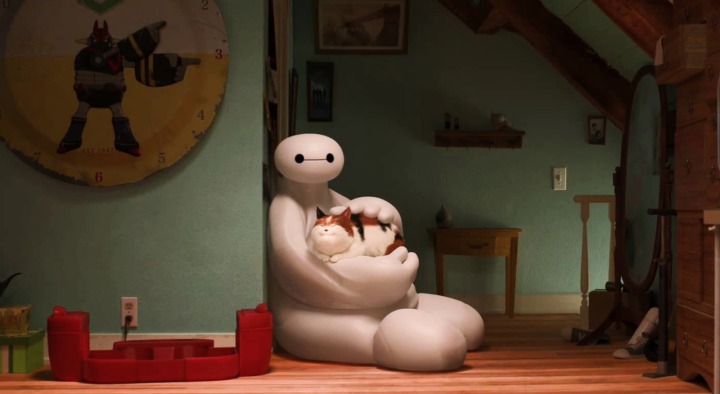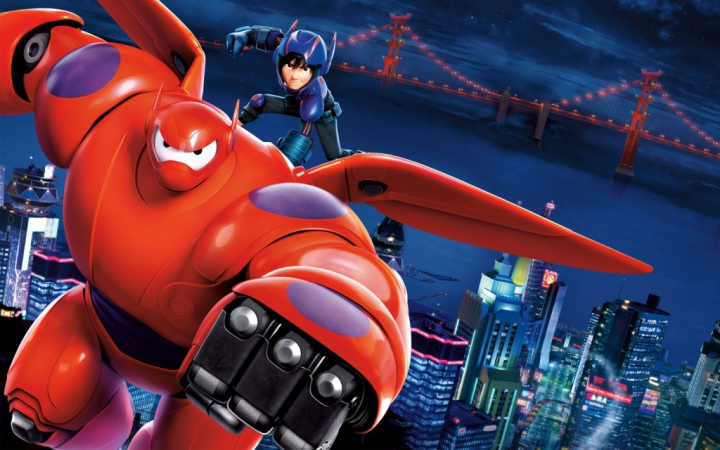The further away I get from Big Hero 6, the less impressed I am by it. Oh, it’s not bad by any means — and Baymax (that’s the big inflatable fellow) is an inspired creation — but it has managed to slide down into the realm of the Perfectly Fine as time has passed. Its story is actually pretty standard stuff and genuine surprises are few. The action frequently looks like a less trippy take on Satoshi Kon’s Paprika (2006), and, for that matter, Baymax — appealing as he is — definitely owes something to Miyazaki. The level of originality in Big Hero 6 is not great, but that’s not entirely a bad thing. There’s something to be said for evoking a broader canvas of film. It works as a kind of shorthand to set a mood or a type of story, but taken too far it becomes dull. It never becomes dull here, though it comes perilously close on occasion.
The story is far and away the least interesting aspect of the film. The whole setup is Disney basic with its dead parents and becomes even more so when big brother Tadashi (Daniel Henney) meets his doom in an explosion, leaving our hero, Hiro (TV actor Ryan Potter), not only an orphan, but a brotherless one. (Did Disney ever think of this particular trifecta of bad luck before?) The whole mystery/revenge plot involving a mysterious Kabuki-masked villain who obviously stole Hiro’s microbots for his own nefarious ends, and who very probably was behind Tadashi’s death, is stock comic book fodder. The assembling of a ragtag team of Scooby Doo-like “superheroes” is hardly inspired — and a reference to this being an origin story doesn’t do much to defuse this. Yes, it helps that the various characters are likable, but it doesn’t alter the template feel of the dynamics at work. That said, charm goes a long way to smooth over the too familiar.
Where Big Hero 6 really scores lies in its overall look — and Baymax, but I’ll get to him separately. The movie takes place in the familiar-yet-fantasticated world of San Fransokyo, which — as the name suggests — is a blend of San Francisco and Tokyo. It — much like its characters — is the epitome of multiculturalism, but in a nonpushy, nonpreachy way. It is allowed to just be. Looking for all the world like an animated version of something the Wachowskis might have dreamed up, this is a brightly-colored world of much greater wonder than the characters who inhabit it — though it is also the kind of world these characters would inhabit. It’s also the perfectly logical extension of the east-west mash-up you find in so much anime, and, yes, it’s gorgeous to look at. But you don’t just look at it. Big Hero 6 allows you to wander through it and inhabit this world.
The film’s big secret weapon, of course, is the soft-spoken Baymax, a creation of the late Tadashi that Hiro only discovers by crying out in pain. Such a cry is what activates this balloon-like “health care companion” — an improbable robotic contrivance designed to be the last word in comfort and nonthreatening reassurance. (I have to confess that my personal take on the character is very influenced by Lisi Russell pointing out how much Baymax’s awkward but unswerving determination to keep moving forward resembles the movements of her late husband, British filmmaker Ken Russell, in his 80s — which it definitely does.) Yeah, Baymax feels a little bit like a more cuddly, animated take on the robotic nurse in Robot & Frank (2012) — especially as concerns the ease with which Baymax can be coerced into outrageous behavior based on the idea that it will benefit his “patient,” Hiro. But it hardly matters. There is so much affable charm to the character (“I am not fast”) and his literal-mindedness that it’s hard to mind.
It’s easier to mind the film’s apparent determination to end on a big smackdown between villain and heroes — something that makes it seem terribly ordinary and way too much like a second-tier superhero movie. In fact, the film’s desire for a big ending does nothing but undermine its accumulated good will. What saves it from this is the inclusion of honest — and well-earned — sentiment, but only just. Rated PG for action and peril, some rude humor and thematic elements.
Playing at Carmike 10.









Yes, and it’s still better than Frozen.
Plus, it doesn’t have that damned song.
The songs here aren’t exactly inspired, either, but at least they’re not sung by the characters.